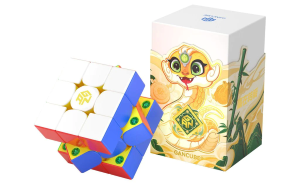Why The Rubik’s Cube Is Still The Most Addictive Puzzle In The World Today

The Rubik's Cube is one of the world’s most enduring puzzles. Despite the rise of digital entertainment, this handheld brainteaser continues to fascinate people of all ages. Whether you're a beginner fumbling through your first layer or a seasoned speedcuber chasing world records, the Rubik's Cube offers a stimulating experience that goes beyond its colorful appearance.
History And Journey Of A Global Puzzle Icon
First introduced over 40 years ago, the Rubik's Cube rapidly became a household name. It began as an educational tool but soon evolved into a cultural sensation. What made it stick around wasn’t just novelty—it was the deep intellectual challenge it posed.
By the early 2000s, speedcubing communities had formed around the globe. Today, in 2025, thousands of official competitions take place each year, drawing enthusiasts from every continent.
The Mechanics Behind The Puzzle’s Infinite Appeal
The core of the Rubik’s Cube lies in its mechanical genius. It functions through layers of rotating pieces, each affecting the entire structure. This dynamic movement pattern allows for more than 43 quintillion combinations, and yet only one correct solution.
Learning to solve it is like learning a new language. Beginners start with basic steps—solving the first layer, then middle, and finally positioning the last corners. As solvers advance, they delve into more efficient algorithms and develop muscle memory.
Enhancing Skills And Building Better Brains
The Rubik’s Cube is more than fun; it’s a workout for your brain. Regular practice improves spatial awareness, short-term memory, and analytical thinking. These benefits make it an ideal exercise for students and professionals alike.
Children develop patience and fine motor skills while solving, while adults find it a calming yet intellectually engaging hobby. Even elderly individuals use the puzzle to maintain cognitive agility.
Digital Cubing Tools And Smart Technologies Changing The Game
Modern technology has brought the Rubik’s Cube into the digital age. Smart cubes sync with mobile apps to track performance, suggest solving improvements, and even offer tutorials. Augmented reality tools now help learners visualize solving paths in real-time.
Virtual competitions have also emerged. Solvers can now participate in timed challenges with players from across the globe, all from their phones or tablets.
A Worldwide Community United By Color And Logic
The Rubik’s Cube has inspired an enormous online and offline community. Forums, Discord groups, and YouTube channels dedicated to tutorials, challenges, and cube modifications are thriving. People of different cultures and backgrounds unite over shared excitement for patterns and problem-solving.
Whether through team competitions or local workshops, the Rubik’s Cube fosters both individual achievement and community bonding.
Conclusion
The Rubik's Cube stands the test of time because it evolves with each generation of solvers. In 2025, it remains one of the few tactile puzzles that inspire education, competition, and personal growth—all within the grasp of your hands.







